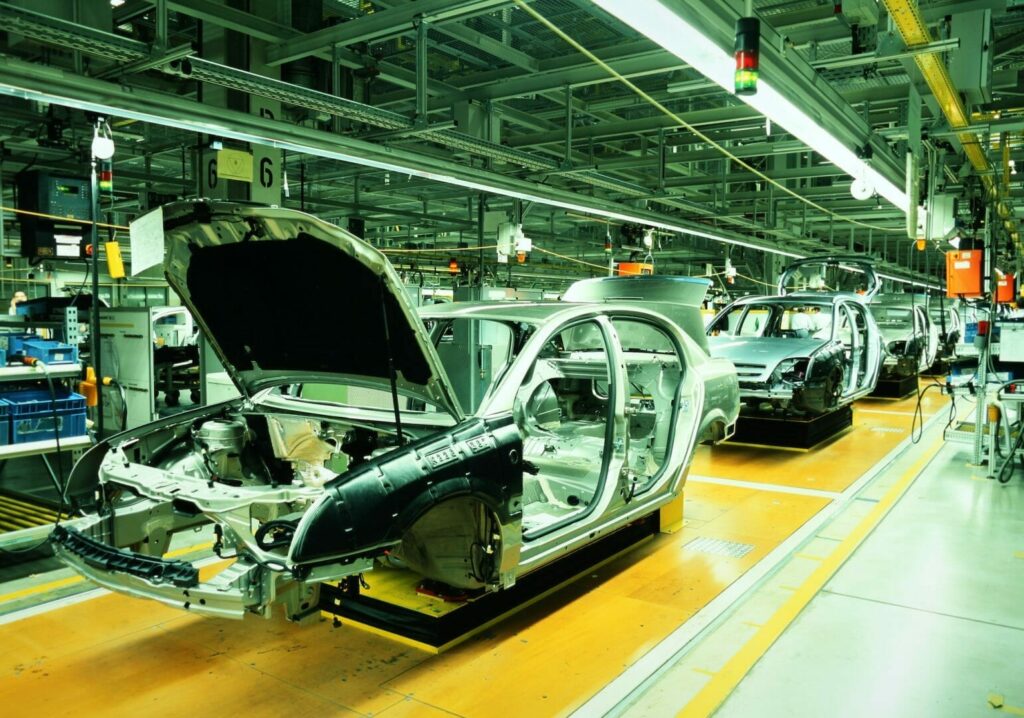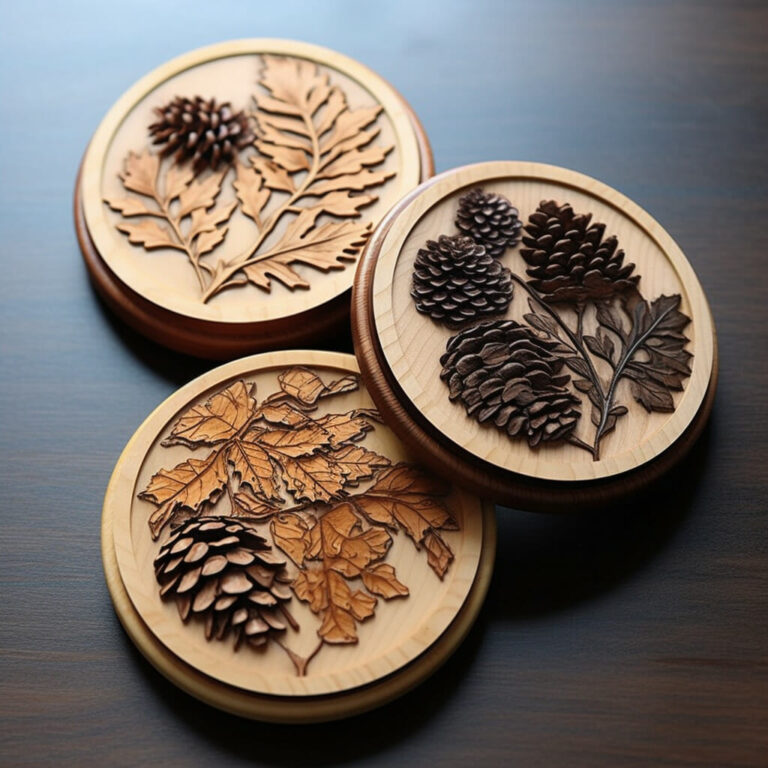By 2022, the market for laser cutting machines will be close to $6 billion, and the automotive industry will be one of the sectors that will have a significant need. The added sophistication will require the use of automotive lasers throughout the automotive manufacturing process, especially when it comes to crafting and trimming electrical components and laser engraving.
CO2 Lasers and How They’re Used
Invented in 1964, CO2 lasers have been used in automotive assembly lines not just for laser marking and engraving but for precise cutting and welding. Their variable output power levels make them useful in virtually all aspects of car manufacturing. Automotive robotics has been a part of the industry for decades and when combined with laser technology, they offer a host of benefits for manufacturing automobiles.
To better understand how they’re used, here are the three ways CO2 automotive lasers can work:
- Fixed Beam: This is a simple mechanical process where a robot moves material in front of a fixed laser beam.
- Moving Arm: The laser is mounted on an articulated robot arm that moves around repeatedly, allowing the laser to cut the material in certain patterns.
- Beam Delivery: With the help of a sophisticated beam delivery system that can include fiber optics, the laser light articulates to cut complex shapes.
In all cases, the robot has to be large and powerful enough to move the laser into the necessary positions efficiently.
Advantages of Automotive Laser Technology
As many manufacturers will admit, one of the most obvious benefits of CO2 laser technology in the automotive sector is its precision. That’s led to a few more advantages that have made the automotive industry progress far more rapidly and decisively.
Less Tooling and Slimmer Parts
Over the years cars have gotten lighter, thanks partially to no longer needing certain parts. For example, flanges that were screwed in to provide a seal are no longer needed as much and may even be omitted altogether in the future. Instead of steel, cars are now using aluminum or carbon-fiber plastic for their exterior. This was made possible by lasers because they quickly welded the material joints to provide a secure seal.
Additionally, laser technology can be used to reinforce structures, providing stability and better load distribution. One example of this is a process called hot forming. It softens the material and improves formability, making it less brittle and prone to breakage. Overall, less tooling means parts don’t have to be traditionally welded, which can cause thermal strain. Lasers provide a quicker and less stressful solution that can be optimized and tailored to fit specific needs.
Innovative Material Mixing
One of the challenges of dealing with certain materials is structure. The need to press and touch them during the shaping process alters the structure and makes it less sound. Lasers mold materials without touching or exerting any force, maintaining their integrity by relying more on cleanly melting the fibers to accomplish the goal.
This method prompts material engineers to come up with innovative new material mixes that would never have been possible before. Imagine being able to create a structurally sound combination with increased tensile strength using materials with different melting points, such as metal and fiber. In many cases, these materials need to be cut, cooled and pressed together to work properly without the need for finishing work, such as adding bolts or even glue.
Less Material Waste
Even with a pandemic, the global scrap metal market is projected to reach 1 billion metric tons by 2027. In modern cars, recycled steel and aluminum account for more than 50% of new car material. While this is a good thing, improperly cut material increases waste and costs manufacturers money. Because cutting patterns can be optimized, lasers help automotive manufacturers make the most of the materials used, reducing scrap waste.
The advantages of lasers are myriad, but the bottom line is that they are faster because they execute repeatable tasks and techniques quickly and accurately. This makes them versatile assets to the automobile industry.
How Lasers Inspire New Product Processes
Even though it’s been around since the 1970s, laser metal deposition, or LMD, is considered a new manufacturing process. It involves using a laser to create a metallic melt pool on the surface of the metal and depositing a metal powder in this molten pool. Automotive dies incur a lot of wear and tear during the forming process, which reduces their usable life. Replacing some of these, even small ones, can cost thousands of dollars. With LMD, manufacturers coat these dies in strategic locations that experience the strongest forces. This technique more than doubles the die’s lifetime use.
With laser metal fusion, metal powder is on a build plate and is selectively melted layer by layer to create an actual component. Each layer of melted powder is between 20 and 100 microns. To put that into context, the width of a human hair is about 75 microns. Each layer in this additive process must be accurately controlled to a certain degree, which makes 3D metal printing an up-and-coming process in many sectors, including the automotive and aeronautical sectors.
Common CO2 Laser Automotive Applications
When people think of cutting and manufacturing in the automobile sectors, many assume that it’s all about the metal components and the carbon-fiber chassis. The fact is, lasers are used in all aspects of building an automobile — even the smoother, softer parts.
Types of Airbags
The ability to manage laser power to the nearest watt helps manufacturers cut almost any material. The market of passive safety means there will be a need for newer types of airbags and airbag applications, including side-impact bags in addition to those at the front. With lasers, manufacturers can incorporate complex and advanced cutting techniques in more efficient ways that will meet demand. The beam can be trained to cut through this type of material at high speeds without fusing, bowing or skewing. On top of that, the laser cutter can also take on specialized patterns far quicker.
Sealed CO2 Lasers for Carriage Components
Interior components, such as the car’s dashboard panel, also benefit from a compact, sealed CO2 laser cutter. Traditional gas CO2 lasers can damage the organic material used in cars and can’t manage the precision required. Any kind of trimming and perforation needed for cup holders and other inserts requires faster, cleaner cuts that leave smooth edges and minimal debris. Sealed CO2 lasers can deliver great cut quality and are far more efficient.
Strengthening Hydroformed Parts
Hydroforming is the process of fabricating and forming metals with the help of water or hydraulic fluid. This negates the need for welding, creating a unibody structure with high tensile strength, increasing the component rigidity and making the design more flexible. This technique is used to build suspension parts and create the engine cradles for various models.
The process of hydroforming creates some geometric displacement that can weaken the material. Lasers are used in conjunction with the tube bending systems to compensate for that during the process so time and material aren’t lost afterward.
How Electric Cars Benefit from Laser Technology
When it comes to traditional car making, lasers are used for their speed and noncontact processing. In the up-and-coming electromobility, or e-mobility, sector, the laser processing technology helps manufacturers overcome some of the challenges of using more traditional processes on new technology. One application requires the use of lasers to produce a hermetic seal in the lithium-ion battery’s case. Manufacturers are working to find ways to create a fiber laser welding method that’s strong enough to seal the battery’s thin walls but isn’t so strong that it creates pores that will let water in.
With regards to batteries, the use of laser welding to join individual fuel cells in the battery pack reduces the need for traditional nuts and bolts, which add weight. Additionally, the welds between the cells need to provide good contact resistance or the overall better efficiency diminishes. In instances of varied material thickness, controlled heat input and penetration may yield better welds, but doing this with multiple lasers increases cycle times and makes the process much faster.
Automotive laser technology is slated to take an even more pivotal role in the future. As materials become lighter and thinner, traditional welding and heat-induced techniques won’t work as well and will require more finesse. The ability of manufacturers to control the power of their lasers will open up different innovative avenues within the industry, improving overall efficiency. Thunder Laser USA offers a variety of enterprise-grade laser cutting machines that are manufactured to strict specifications so they’re ready to run upon delivery. Check us out today.




